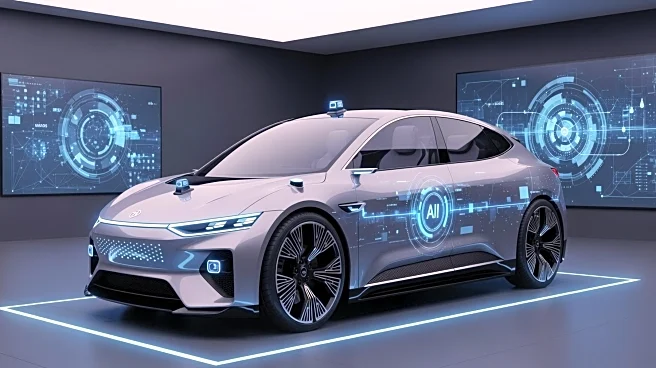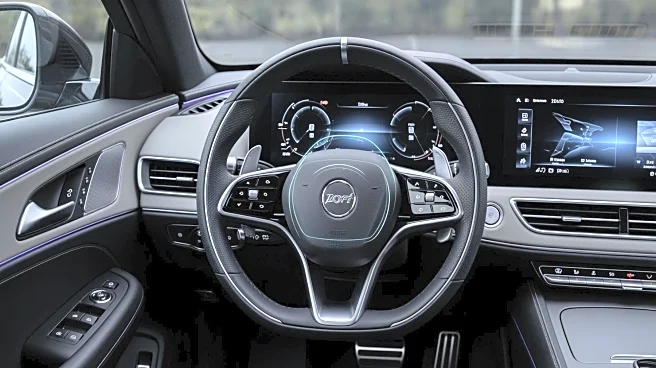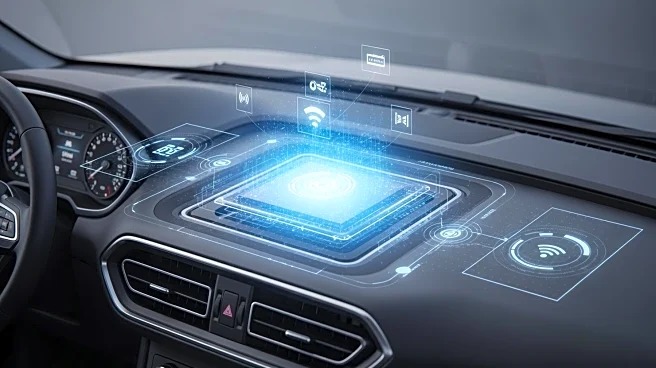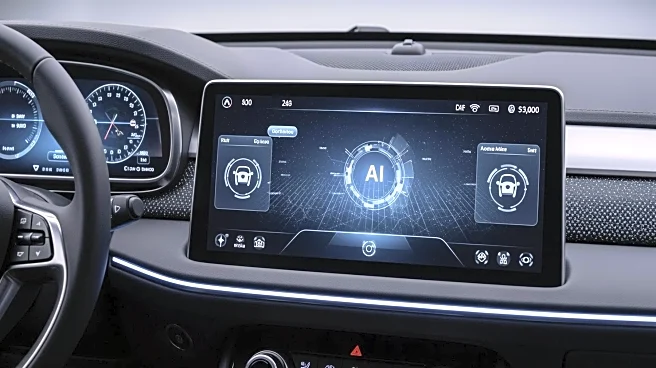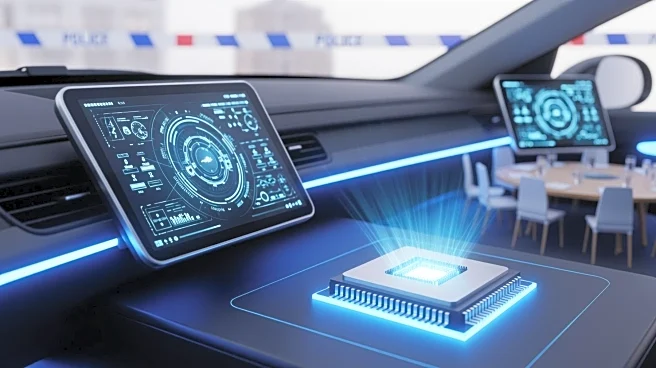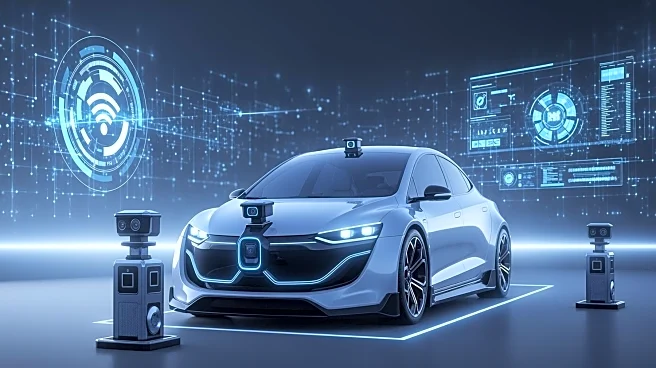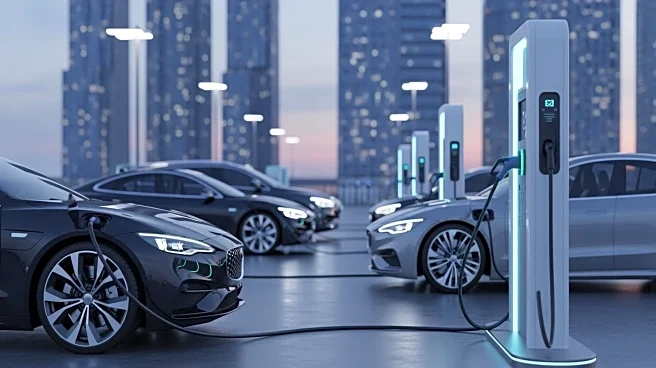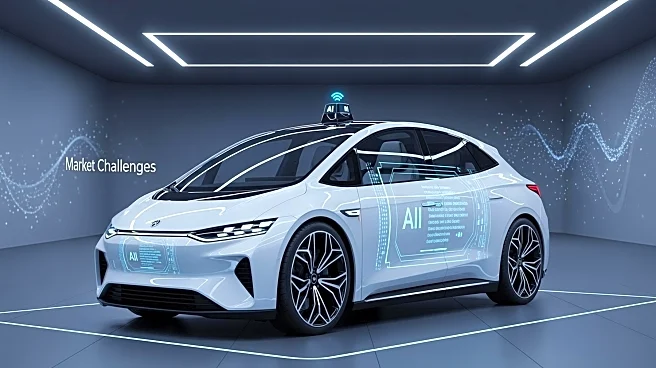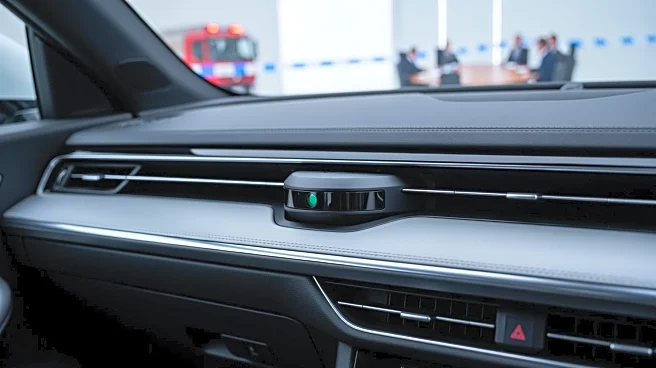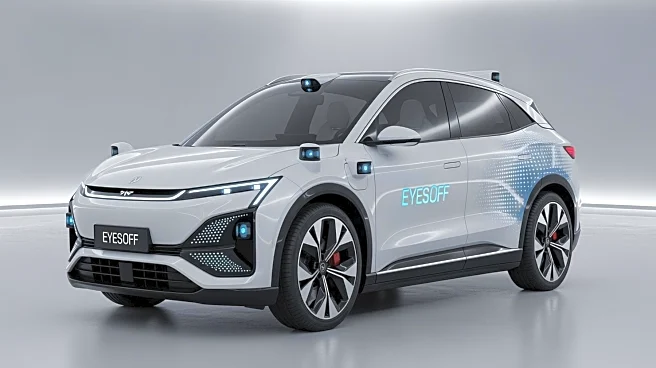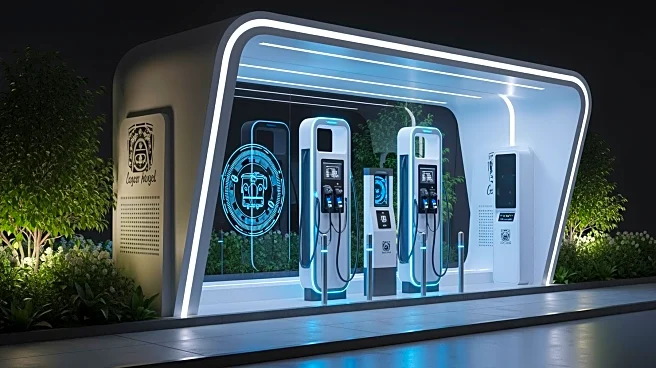What's Happening?
General Motors (GM) has announced a significant overhaul of its vehicle architecture, focusing on integrating artificial intelligence and automated driving capabilities. This new electric architecture and centralized
computing platform will be the foundation for all future GM vehicles, both gas-powered and electric, starting in 2028. The initiative, unveiled at an event in New York City, will debut in the Cadillac Escalade IQ in 2027. The platform will be powered by Nvidia's Drive AGX Thor supercomputer, a result of an expanded partnership between GM and Nvidia. This overhaul aims to enhance vehicle performance, introduce new features like a conversational AI assistant, and enable advanced automated driving systems. GM's Chief Product Officer, Sterling Anderson, emphasized the importance of accelerating the rollout of this new architecture to improve user experience and profitability.
Why It's Important?
This development is crucial as it positions GM to better compete with companies like Tesla, which have already adopted a software-first approach. By consolidating numerous electronic control units into a unified computer core, GM aims to streamline vehicle operations and enhance computational capabilities. This shift is expected to significantly increase the capacity for over-the-air software updates, improve bandwidth, and boost AI performance for autonomous features. The move reflects a broader industry trend towards more software-centric vehicles, which can offer consumers enhanced features and services. This could potentially reshape the competitive landscape in the automotive industry, as traditional automakers strive to keep pace with tech-driven competitors.
What's Next?
GM plans to continue developing and refining this new architecture, with a focus on reducing vehicle development time from four to five years to closer to two years. The company will likely face reactions from competitors and stakeholders as it rolls out these advancements. The success of this initiative could influence other automakers to adopt similar strategies, further accelerating the shift towards software-driven vehicles. Additionally, consumer response to these new features and capabilities will be critical in determining the long-term impact of GM's strategy.
Beyond the Headlines
The integration of AI and advanced computing in vehicles raises important ethical and legal considerations, particularly concerning data privacy and the safety of automated driving systems. As vehicles become more connected and reliant on software, ensuring robust cybersecurity measures will be essential to protect against potential threats. Furthermore, the shift towards more automated driving features could have implications for employment in the driving sector, as well as regulatory challenges related to the approval and oversight of such technologies.
